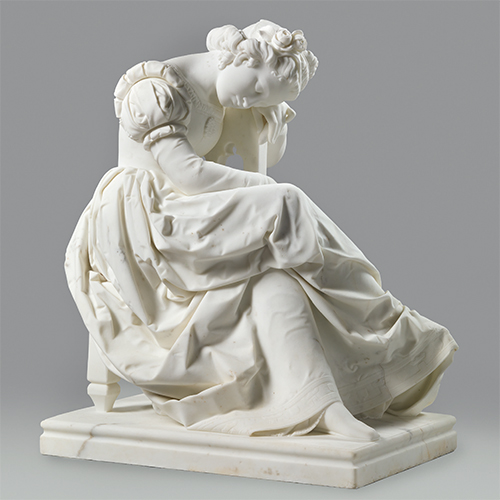Sleeping Beauty
A Marble Briar Rose by Frans Stracké
DOI:
https://doi.org/10.52476/trb.9727Abstract
The interest in fairy tales grew strongly over the course of the nineteenth century, particularly in Germany, the birthplace of Frans Stracké (1820-1898). Renowned artists made illustrations for popular publications of fairy tales and in the middle
of the century characters from fairy tales also appeared in paintings and sculptures. The sculptor Frans Stracké was inspired by this development and in the eighteen-sixties created a Sleeping Beauty and a Snow White. He may have chosen these designs because the sleeping figure offers greater sculptural possibilities, for example in funeral art. He showed Sleeping Beauty at the precise moment she falls asleep, after she had pricked her finger on a spindle. Stracké followed the fairy tale by the Brothers Grimm from 1812, in which the ill-fated event was predicted during the celebration of Sleeping Beauty’s birth. Sleeping Beauty (also known as Briar Rose) was precisely the sort of subject Stracké preferred: he excelled in making genre-like sculpture of a very high standard. This was little appreciated in the Netherlands, whereas in France and Italy practitioners of this type of sculpture enjoyed considerable success. Stracké is credited with introducing contemporary developments in European sculpture into the Netherlands; Sleeping Beauty is a relatively early and typical example.
Downloads







